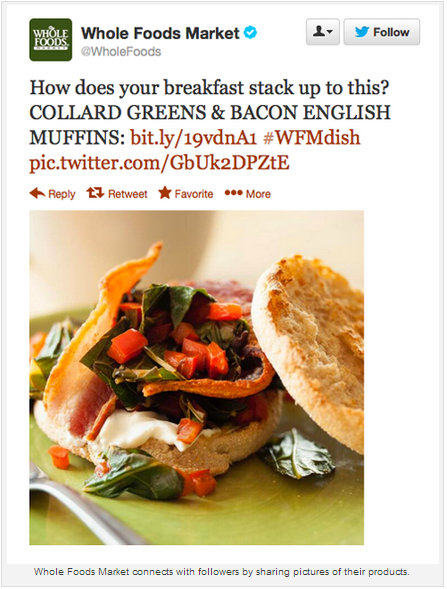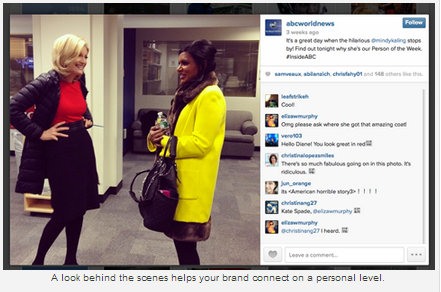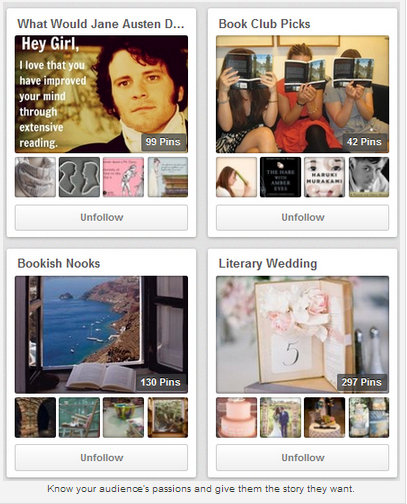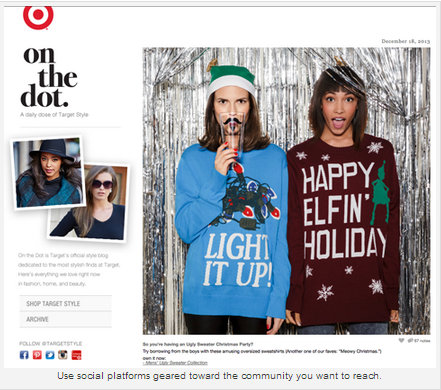Telling stories is nothing new: we’ve been telling stories of where we come from, where we are going and who we are sharing that journey with since we sat around the flickering fires of our ancestors’ caves, millennia ago. The ability to tell stories is what sets humans apart; it helps us to bond, form communities and work together to achieve more than we could ever do on our own.
In a sense, communities are their shared stories and their shared experiences. So it stands to reason that if you want to build communities – strong communities that bond and celebrate together – you need to learn to become an effective storyteller. In the social era, great marketers are great storytellers.
These days we have many ways of telling stories, and social media has been a fantastic way to build communities all around the world. But as the amount of information shared on the web exponentially increases and people’s attention span drops every year, there is a need for our storytelling to become more visual. Our brains process visuals 60,000 times faster than text. And we decide in the split second whether we want to continue to consume more content from a company or brand based on how appealing the visuals are. Now that we can share images at the click of a button, and we have seen the rise of visual networks, visual storytelling has become central to our global communication.
“We’ve now entered a phase in which visual communication is supplanting the written word,” says Bob Lisbonne, CEO of Luminate and former SVP of Netscape. “What some are now calling the dawn of the Imagesphere.”
On Facebook, up to 250 million photographs are uploaded every day, and those photographs are prominently featured on the social media platform. Twitter has become more visual, with photos and videos now showing up in your timeline. The growth of image-rich sites such as Pinterest has been stratospheric, and apps such as Instagram, Vine and even Snapchat aren’t just for teenagers – savvy marketers are using them too. Why? Because these channels and tools can help us tell stories that create engagement, build communities, and ultimately help to nurture brand loyalty and long-term relationships with customers.
So what are the best ways brands are using visual storytelling to engage their audiences?
1. Bring your products to life on Twitter

You can use photos of your products to liven up your Twitter feed, or you can take a leaf out of Whole Food’s book and tell the story of how your products fit into customers’ lifestyles. Over 3.5 million fans follow @WholeFood’s account for all the great ideas they give for how to use their products and maintain a healthy lifestyle. Whole Foods knows the importance of using images: they post frequent recipe ideas to show how certain foods work together in ways you might not have thought of – and make sure they post plenty of tempting photos. This is a really good way of bringing ideas to life but avoiding the “sell sell sell” message put out by so many companies. Whole Foods are actually helping customers with their recipe ideas. Customers will be delighted to add variety to their diet by introducing new products their might not usually think to buy.
Tip: Instead of directly pushing your new product marketing message, try showing how your customers can use it in their everyday life through quality images or videos that give a ‘lifestyle’ angle to your marketing. Better yet, add a little bit of tasteful humor to your message that will help your fans to emotionally connect with your brand.
2. Tell your behind-the-scenes story
Going behind the scenes can give an alternative perspective on your brand and show your brand’s hum side. Whether you want to give a more informal view, share your culture, show how you design a product, or celebrate some of the un-sung heroes of your business, photos will tell a more eloquent story than any copy ever could.

ABC World News uses Instagram creatively to show their behind the scenes story. These informal moments highlight all the work that goes into those few minutes when the camera is rolling, and work well to show a lighter side to the network which truly connects with fans. Their Instagram account has nearly 14,000 followers, but they share their images across social media for a wider reach. ABC knows how to get the most out of the spontaneous and fun feel that Instagram gives you.
Tip: Don’t just take photos of the perfect “on air” moments. Showing the work that goes into research, design and marketing your products gives a real depth and can convey your passion far better than a more formal and all-too-perfect photoshoot.
3. Celebrate your brand’s philosophy and heritage

Many brands use Pinterest to show off their products and services, and to post images they think their followers would be interested in. But the most successful company pages on Pinterest tell the whole story of their brand and its heritage, not just what it sells. What is your brand’s ethos? Why do your customers buy your products rather than your competitors’? What is the lifestyle that goes hand-in-hand with your brand?
At Random House Inc. they understand that books aren’t a product, they are a way of life for their customers. On their Pinterest board their 1.5 million followers love the way they use images to capture the entire philosophy of books, reading and literary interests with boards such as “What Would Jane Austen Do?”, “Bookish Nooks”, full of enticing places to read, and “Literary Weddings”.
Tip: Don’t just share pins that show your products; show what inspires you, celebrate the communities where you live, show what causes are close to your heart, and highlight the things your customers love.
4. Use video to give a 360-degree view of your brand
You Tube is more than a site to dump all your TV ads into in the hope fans will share them to increase their reach. Yes, it is important to have all your ‘official’ advertising there, but you can do so much more with video – and give people a reason to subscribe to your channel.
Beloved tech brand Apple really know how to mix up their online video content on You Tube to tell stories that engage their followers. They can show off new features in greater detail than you can show in a TV ad, like in this video above that gives a tour of their new Touch ID fingerprint identity sensor (which has had over 3 million views). They can show off the stories behind innovations – why they were necessary and what they do differently from the competition. They use special video events that make fans feel that they are right up front at the action when Apple unveil new products, and they can show how their products have changed people’s lives for the better.
Tip: Use videos to share your every-day joys, employee and customer passion towards your brand, and entertaining moments for a more humanizing perspective on your business.
5. Use Tumblr to highlight one aspect of your story
If you find it hard to know how to target new customers because by trying to target your entire demographic you end up reaching no-one, try setting up channels for specific niche audiences and just tell the story that’s relevant to them. Image blogging site Tumblr is perfect for showing your visual journey, one photo at a time.

Target sells such a wide range of products that it can be beneficial to send different messages to different groups on social media. Target’s style blog on Tumblr is successful because it shares only the images that their younger, female, more fashion-conscious followers will be interested in. The images can be shared from Tumblr to Facebook, Twitter and Pinterest, helping spread their message to like-minded groups of people no matter where they are. Under each image or set of images there is then a link back to the product page, helping drive traffic to the relevant e-commerce page, which is a very clever way of selling without being ‘salesy’.
Tip: Drive traffic back to particular sections of your website by using social media to tell different stories to different audiences.
Social media is a gift to storytellers. Now brands can use images and videos to interact with new customers, truly connect with their current loyal customers, as well as wider communities to help their message reach wider audience than ever before. Using images and rich media to tell your brand’s visual story can show a different side to your brand and build closer relationships with your fans/followers/subscribers.
Originally posted in Social Media Examiner
